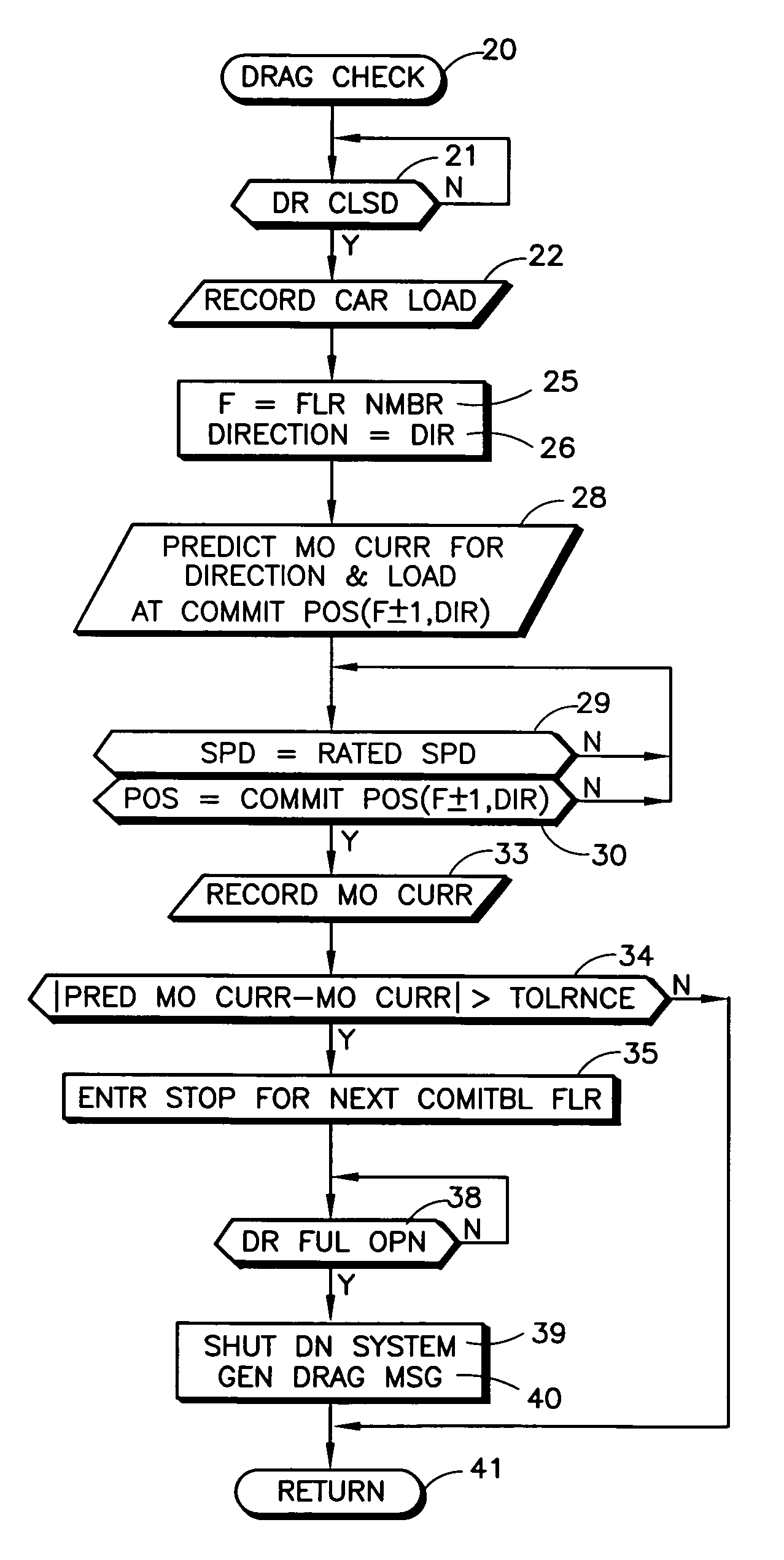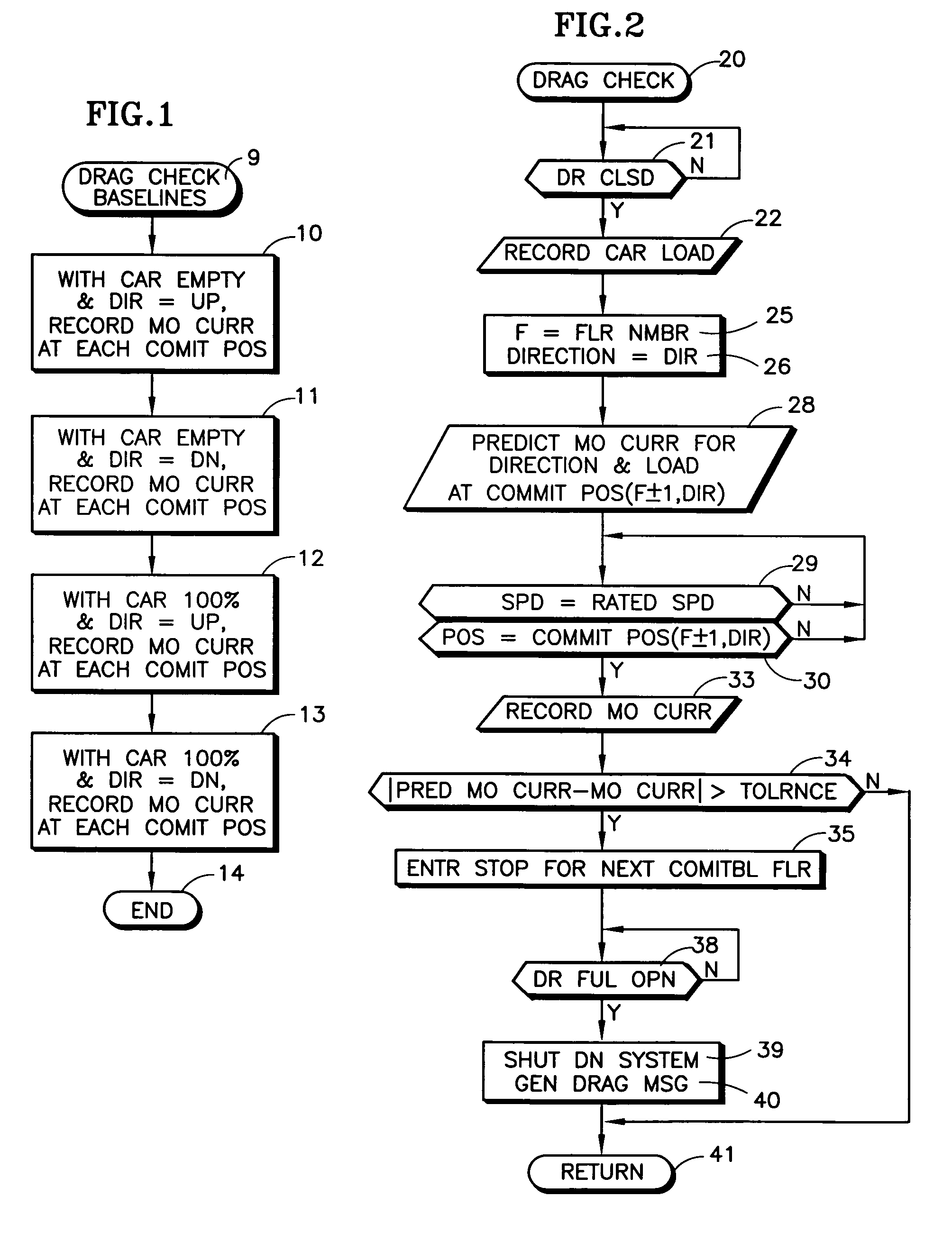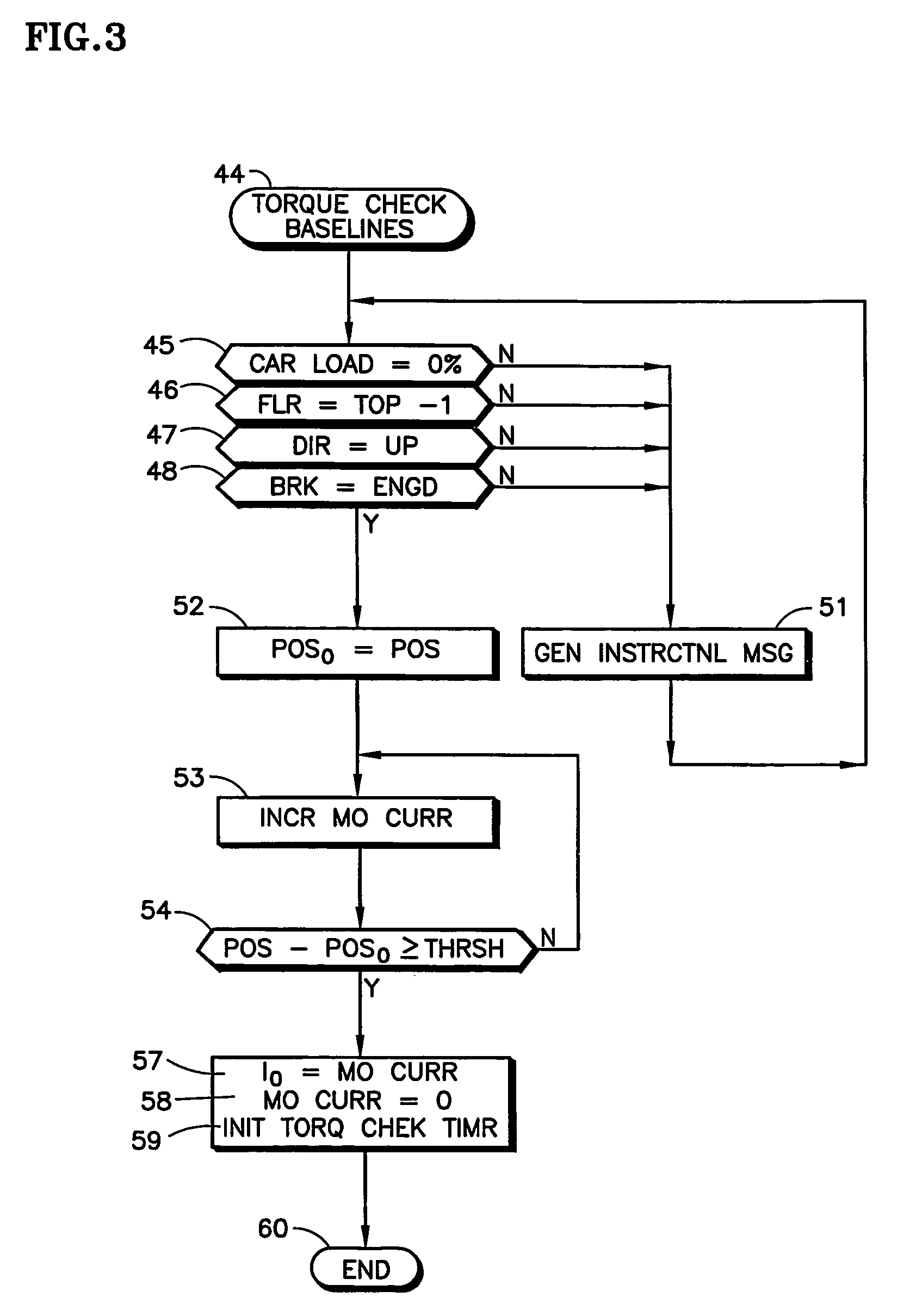Detecting elevator brake and other dragging by monitoring motor current
a technology of motor current and brakes, which is applied in the direction of brake types, braking systems, elevators, etc., can solve the problems of unnecessary shutdown of elevators, additional costs associated with service calls and replacement of switches and sensors, etc., to improve the ability to check the torque of elevator brakes, reduce costs, and improve the reliability of elevators
- Summary
- Abstract
- Description
- Claims
- Application Information
AI Technical Summary
Benefits of technology
Problems solved by technology
Method used
Image
Examples
Embodiment Construction
[0012]Referring to FIG. 1, the baseline currents for the drag check according to the invention are provided in a series of routines reached through an entry point 9 which are performed prior to or soon after the elevator goes into service, or a thorough brake refurbishment has occurred. These routines are called into operation by service personnel at an appropriate time and under appropriate circumstances. A first routine 10 is performed with the car empty and the direction up. As the car moves up, the motor current is recorded at each floor commitment position (that is, the final position along the route of travel at which the car could commit to stopping at the next floor), or, if desired, the motor current could be recorded every three meters, or in some other defined way which is deemed suitable in any implementation of the present invention. Although the predetermined positions in this embodiment are taken to be floor commitment positions, which are different for the upper dire...
PUM
 Login to View More
Login to View More Abstract
Description
Claims
Application Information
 Login to View More
Login to View More - R&D
- Intellectual Property
- Life Sciences
- Materials
- Tech Scout
- Unparalleled Data Quality
- Higher Quality Content
- 60% Fewer Hallucinations
Browse by: Latest US Patents, China's latest patents, Technical Efficacy Thesaurus, Application Domain, Technology Topic, Popular Technical Reports.
© 2025 PatSnap. All rights reserved.Legal|Privacy policy|Modern Slavery Act Transparency Statement|Sitemap|About US| Contact US: help@patsnap.com



